Bolivian begonia, description and photo, planting and care, reproduction, wintering organization
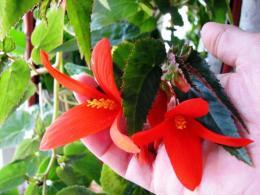
The story about begonias should begin with an interesting fact: among them there are herbaceous plants and shrubs; they can be annual or perennial, have roots or tubers. Botanists count more than one and a half thousand representatives of this family.
One of the most popular species is Bolivian begonia.
It is distinguished by unusual flowers and is a plant that does not require special care.
Content:
- Bolivian begonia: description and photo
- Varieties
- Bolivian begonia: where to buy, how to grow from seeds
- Bolivian begonia, propagation by cuttings
- Features of care and watering
- Trimming
- Diseases and the fight against them
- How to preserve begonia in winter, proper organization of wintering
- Winter care for begonia, which is grown as a houseplant
- How it is used in landscape design
- Some interesting facts
Bolivian begonia: description and photo
This species is classified as ampelous, although initially the shoots of the flower rush upward, but after reaching a height of 30 cm they spread out and fall down in multi-tiered cascades.
The plant is a dicotyledon; the fruit is a capsule with seeds. Belongs to the tuberous family.
Under natural conditions, begonia is found in tropical forests and on mountain slopes. The flower's homeland is South America, the eastern part of the Andes.The flower is also found in Africa, but only in the Western part, where a humid climate prevails.
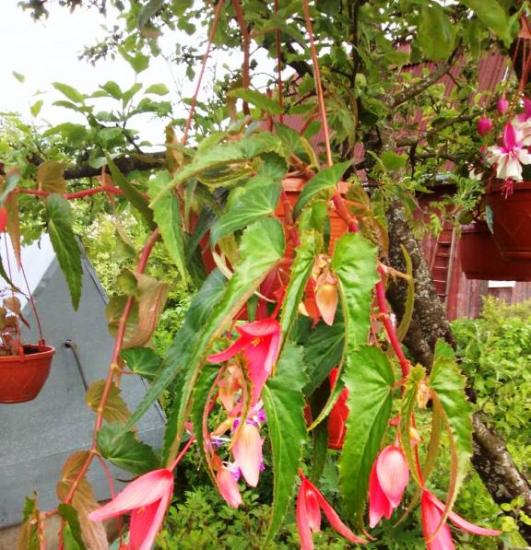
Bolivian begonia looks luxurious. It has bright, green leaves with a jagged edge, the flowers are elongated, somewhat reminiscent of bells. The height of an adult plant can range from 0.3 to 0.45 m.
The flowers are bright, orange-red.
More information about Bolivian begonia in the video:
Varieties
When it comes to Bolivian begonia, we most likely mean its most popular varieties:
- Santa Cruz Sunset, the plants are spreading, ampelous, the length of the shoots reaches 40 cm. Its flowers are very reminiscent of fuchsia, but have an orange-red color.
- Copacabana, an unpretentious variety, creeping branches, many flowers similar to bells, color - bright red.
- Bossa Nova, with shoots up to 50 cm long, flowers can be white, pink, red or orange, similar to fuchsia flowers. The flowering period lasts 5-6 months and ends with the onset of frost.
Bolivian begonia: where to buy, how to grow from seeds
In the middle zone, the plant is cultivated as an annual. Sow seeds. Depending on what variety is grown, seeds are sown to obtain seedlings from January to the end of March.
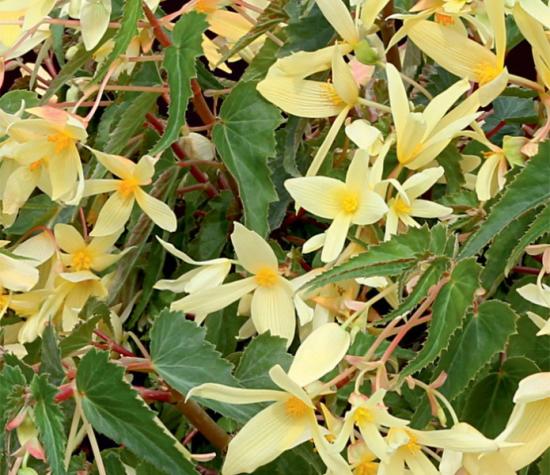
The soil for growing seedlings is light and has high fertility.
To make your own soil mixture, use the following recipe:
- 1 part humus
- 1 part peat
- 1 part sand
- 2 parts leaf soil.
The seeds are not placed densely, directly on top of the leveled substrate. Do not sprinkle soil on top. Crops are often sprayed with a sprayer until the first shoots are noticed.
Next, the container with the seedlings is covered with film and placed on a warm, well-lit windowsill.
The greenhouse is ventilated daily by opening it for 10-15 minutes. If the soil surface dries out, spray with warm water.
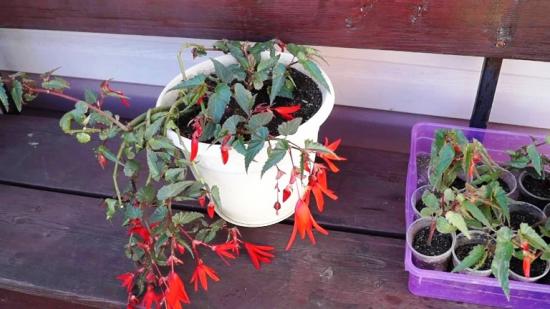
The emergence of seedlings will have to wait 2 weeks, and this is if the soil temperature is not lower than + 20 C.
For normal development, daylight hours are required to be extended, i.e. It is possible that illumination with a special lamp will be required.
The first picking is made after the appearance of the third leaf; during this period it is advisable to lower the temperature to +16 +17 C.
After 2 months, a second pick is made, the temperature should be lowered another couple of degrees.
During the same period, the first fertilizing is carried out. Fertilizers use nitrogen-potassium fertilizers.
Bolivian begonia, propagation by cuttings
Since growing seedlings from seeds is not so easy, the cutting method is often used. The first seedlings are purchased from breeders or specialized garden nurseries.
Cuttings are grown in containers; it is recommended that their diameter be about 15 cm; 2 cuttings can be planted in one pot.
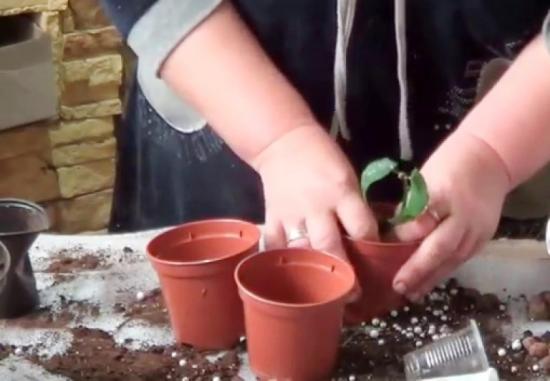
To avoid the development of diseases, cuttings are treated with fungicides before planting.
The development of plants should be monitored, because You will need to do some pinching, usually leaving 3 pairs of leaves. If time is lost, you will need to complete the procedure 2 weeks after planting.
The optimal temperature for keeping them during this period of life is from + 18 to + 20 C, then it can be lowered to +15 C. The leaves should not be exposed to direct rays of the sun; it is best to organize partial shade.
The need for watering will appear after the soil surface dries out. The frequency of applying potash fertilizers is once every 10 days. It will take one and a half to two months to grow seedlings. Then they are planted in a permanent place.
Let's find out in more detail how to grow begonia from cuttings, watch the video:
Features of care and watering
Everything that will be said about care is not so necessary; seedlings planted in the ground will survive in any case. But if you want to get a truly amazingly beautiful, properly formed flowering bush, then it’s a good idea to follow the care recommendations.
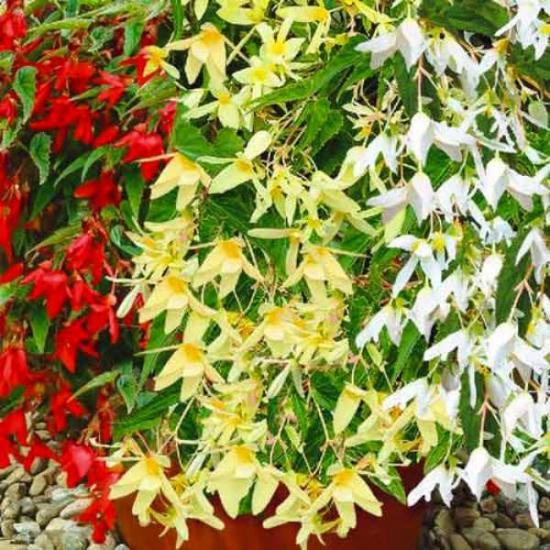
It is recommended to water the begonia moderately, but do not allow the soil to dry out or become waterlogged. Since the plant is moisture-loving, you can periodically spray water around it, but it is not advisable for it to get on the leaves.
Feeding an adult flower is systematic, with fertilizers high in phosphorus and potassium. These minerals are necessary for bud formation and long flowering. Fertilizers are applied once every ten days.
Trimming
To get beautifully flowing branches, Bolivian begonia needs to be pruned correctly. This procedure helps rejuvenate the plant and improves the quality of flowering.
Since the green mass will grow very quickly, pruning should be done in a timely manner. In case of untimely pruning, all the flower’s energy will be spent on growing greenery, and flowering may stop.
Bush-forming pruning is performed when the stem length is up to 8 cm; when the length reaches 13 cm, the tops are cut off to stimulate the growth of side shoots.
Next, the procedure is carried out as the shoots grow, the tops are removed, redirecting growth to the side shoots, which, in fact, allows you to create a beautiful cascade.
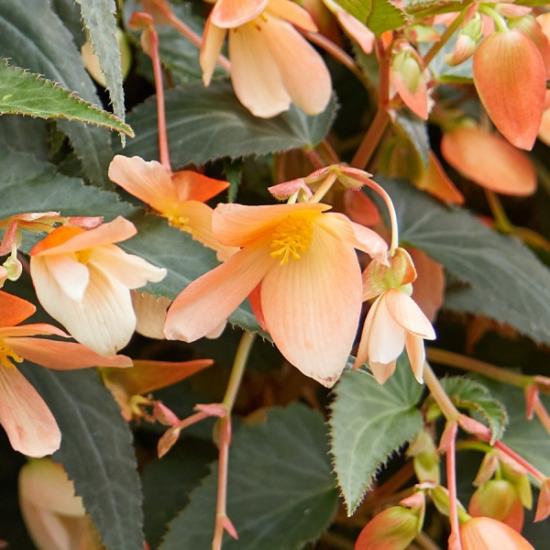
Pruning is done not with scissors, but with a sharp knife, this reduces the traumatic nature of the procedure.
Diseases of Bolivian begonia
The most dangerous pests of begonia are spider mites, aphids, and nematodes. Fungal infections, namely gray rot, are often observed. To combat these scourges, fungicide treatment is used.
Some plant ailments can be caused by errors in care:
- in poor lighting, leaves may become pale
- with insufficient humidity, wilting and yellowing of leaves and buds may occur
- Excessive watering can cause powdery mildew, which will appear as a whitish coating on the leaves and lead to their further curling and drying out.
- With irregular watering, the tips of the leaves can curl and dry out.
Having noticed such symptoms, you need to think about adjusting your care.
How to preserve begonia in winter, proper organization of wintering
Flower tubers require special winter storage conditions. Small plant tubers are usually placed in plastic bags, covered with peat and placed in a cold place, for example, on the bottom shelf of the refrigerator. The tubers are periodically inspected, and seedlings that appear untimely are removed.
You can also consider keeping plants in boxes in winter, in a fairly cool and well-lit room. This option requires periodic watering. With the onset of warmth, the bushes are planted in separate containers with fertile substrate.
Planting in open ground is carried out after the onset of stable heat.
If the tubers are small and weak, then they are stored in a cool basement. They require periodic moistening, otherwise they may dry out.
It should be understood that although the growth of shoots in plants of the first year of life stops in winter, talking about the dormant period is conditional, because shoots do not disappear for the winter.
Winter care for begonia, which is grown as an indoor flower
If the flower is grown in flowerpots, then its flowering will last until late autumn. The onset of autumn cold is associated with the beginning of a state of dormancy.
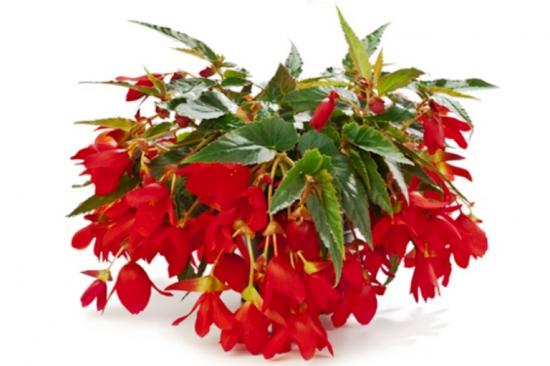
Plants are not replanted during this period. Watering is reduced. Moisten the soil substrate only if it dries out.
Since the air humidity in the apartment drops sharply with the beginning of the heating season, you should spray water from a spray bottle near the plants (not on the leaves!).
You can also place the pots in containers filled with gravel and periodically add a little water to them.
How it is used in landscape design
The plant is often used to create a landscape garden. Planted in flower beds and flower beds as a creeping plant.
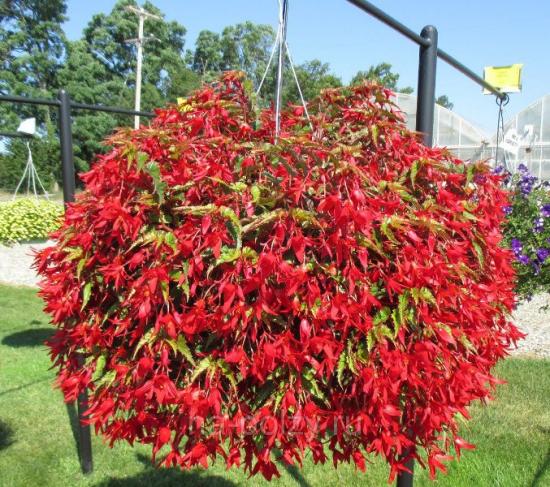
Often used for planting in hanging pots, flowerpots or containers that decorate verandas or terraces. A good option is to plant them in boxes to decorate the balcony.
Some interesting facts
The Bolivian begonia was discovered and described by members of an expedition organized in the city of Rochefort. In the eighties of the last century, the residents of this city created the world's largest collection of these plants called the "Greenhouse of Begonias"
Gardeners indicate 125 varieties of begonias as the best plants for landscaping. Although in reality there are many more of them.
The most popular varieties are those bred by Belgian flower growers.
Astronomers named one of the asteroids discovered in 1920 in honor of this plant.

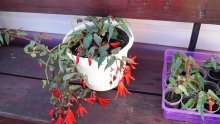
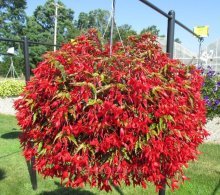
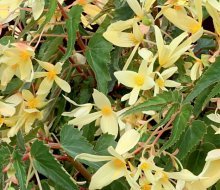

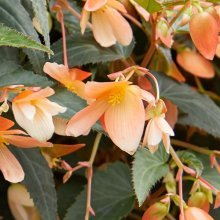
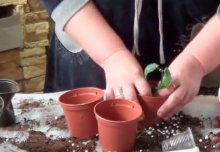
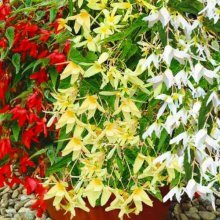
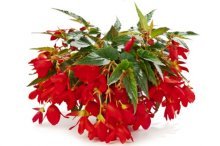
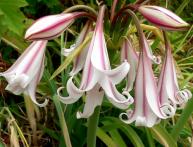


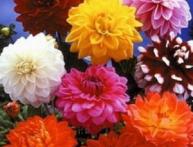
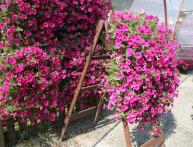

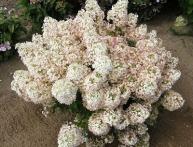
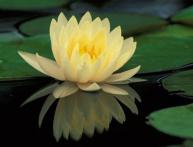
Comments
Begonia is a very beautiful plant; we grow these flowers in pots in the room. We fertilize the begonia with liquid fertilizer for indoor flowers, the soil in the flower pot, trying not to over-moisten it.